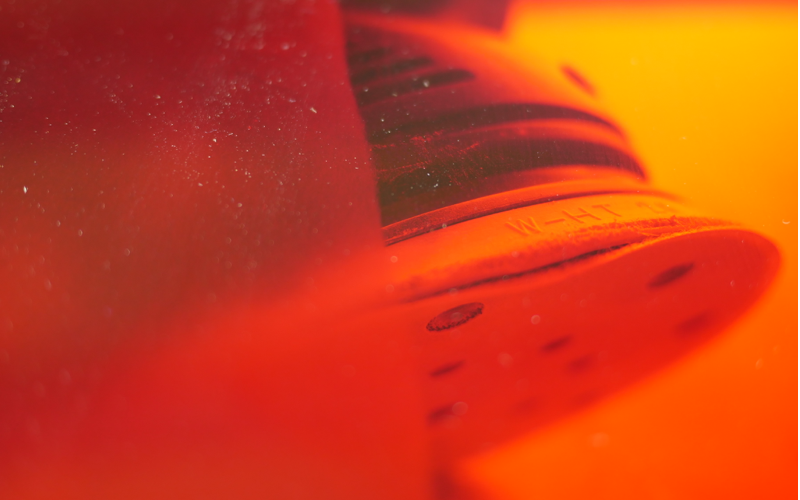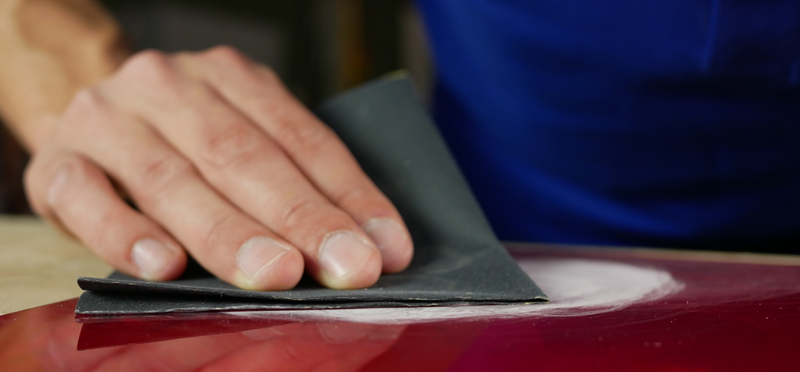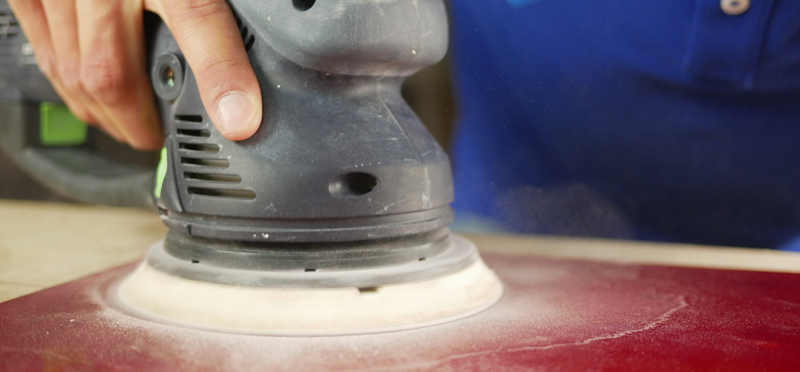There are several reasons for making acrylic sheet matte, which may be to do with the visual effect of edge lighting, or for privacy reasons. Of course, you can choose opal or milk-coloured acrylic sheet, but these sheets have a smooth surface. If you want to mattify the sheet and thereby obtain a rough surface, you can do that fairly easily.
Do not use chemicals for mattifying!
First things first: there are countless products that you can use to frost acrylic. It is tempting to do this with solvents because it works very quickly, but there’s a good chance that the acrylic will be damaged (crackle due to the action of chemicals) and that dirt will enter the sheet. And of course, this stuff entails health risks. So don’t go there!
Achieving a matte effect manually – what do you need?
Ordinary scouring wool (Scotchbrite) or even better, very fine sandpaper, grain 600 or even finer. To start, remove the protective film on one side of the acrylic sheet. To dispose of the abrasive particles, use a mix of water and a few drops of washing-up liquid, it does not have to foam. Spray the entire surface of the sheet thoroughly and start sanding. Make sure you alternate the sanding movement, otherwise you will get a visible sanding direction on the sheet. Regularly wipe the water and the scraps off the sheet and check your work. Then spray again and continue sanding until the desired result is achieved. Are you satisfied with the result? Then apply Burnus Antistatic cleaner to the sheet. This ensures that dust does not adhere and that the acrylic becomes antistatic.
Achieving a matte effect by machining: note the temperature
Mattifying by machine is of course also possible, but this requires a lot more practice. Assume that your first attempt will take more time than manual sanding. What do you need? To start with, an eccentric sander and the finest sandpaper possible. Because water and electric tools do not mix well, you cannot use water. As a result, you lack the cooling you need when sanding: acrylic sheet quickly becomes liquid, causing your sandpaper to stick. The advice is to run the sander at the lowest speed and to exert minimal pressure. Our advice is to first roughen the surface with sanding wool and then apply the finishing touch with the sander. Once you have achieved the desired result, clean the sheet with water and a few drops of washing up liquid. After drying, we recommend that you treat the acrylic sheet with Burnus Antistatic cleaner.



